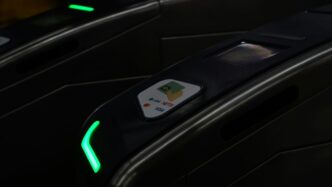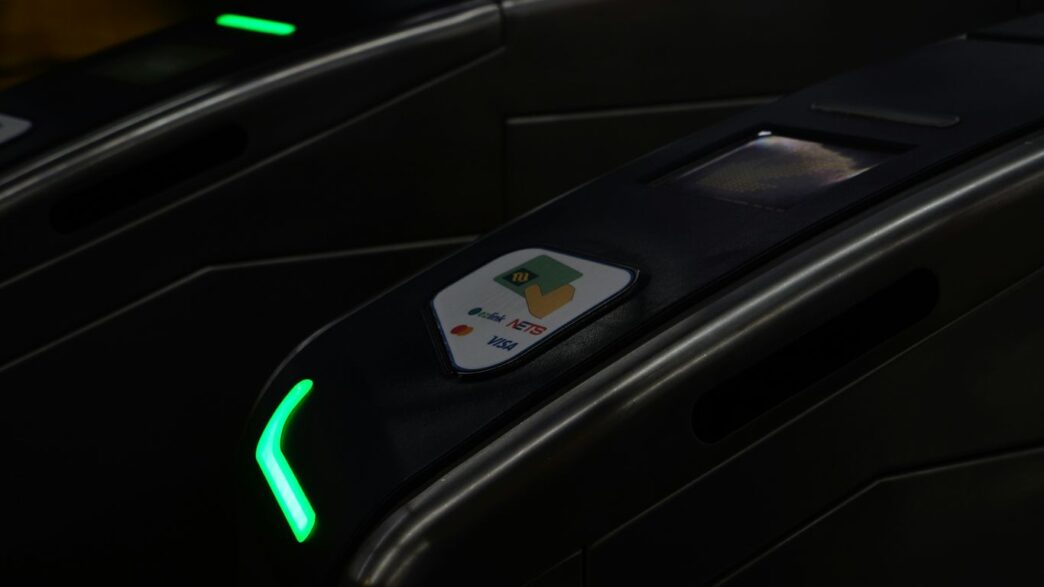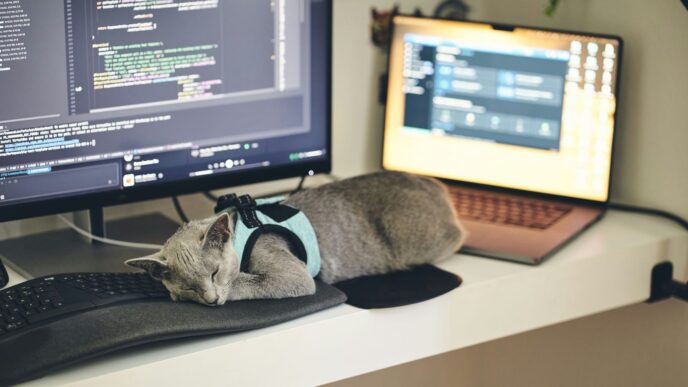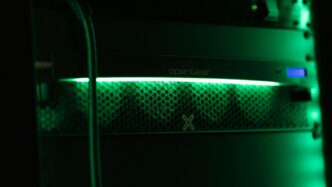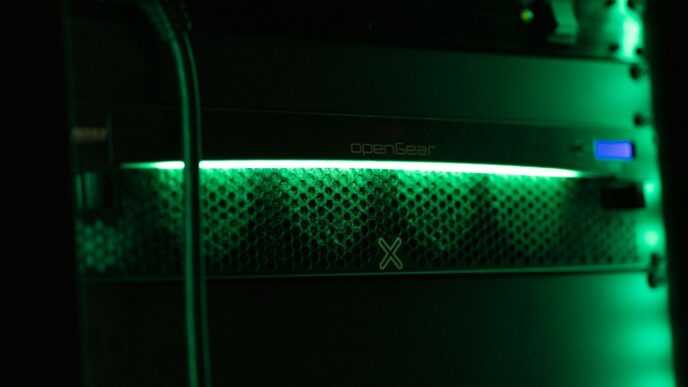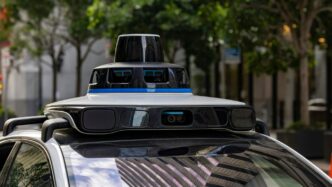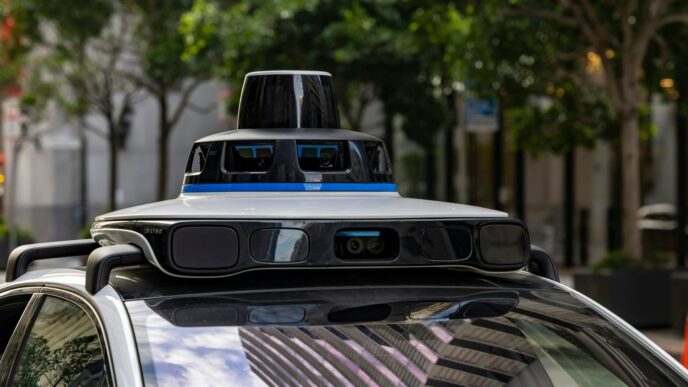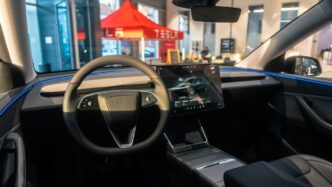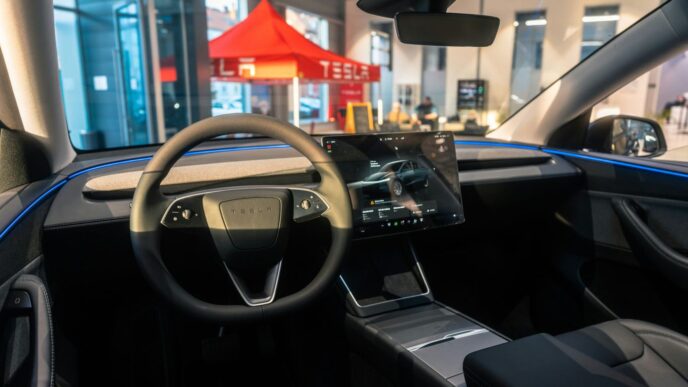So, GM and NVIDIA are teaming up again, and it looks like a pretty big deal. They’re not just talking about cars here, but also how those cars get made. Think smarter factories and vehicles that can do more on their own. It’s all about using AI to make things better, faster, and maybe even a bit more futuristic. This nvidia gm partnership seems to be a key move for both companies.
Key Takeaways
- GM is working with NVIDIA to build new cars with better self-driving tech.
- They’re using NVIDIA’s AI tools to make car factories run more smoothly.
- Digital copies of assembly lines will be created to test things out virtually.
- Robots in factories will get smarter with AI for more precise work.
- Future GM cars will use NVIDIA’s special chips and software for driving and in-car features.
NVIDIA Powers GM’s Next-Generation Vehicle Technology

So, GM is really leaning into NVIDIA’s tech for their upcoming cars. It’s not just about making them drive themselves better, though that’s a big part of it. They’re looking at the whole picture, from how the car handles on the road to what you experience inside.
Advancing Autonomous Driving Capabilities
GM is putting NVIDIA’s DRIVE AGX platform into their next-gen vehicles. Think of this as the brain for self-driving features. It’s a powerful system that can process a ton of information really fast, which is exactly what you need when a car is making decisions on the fly. This tech is designed to handle complex driving situations, aiming for safer and more reliable autonomous driving. It’s a big step up from current driver-assist systems.
Integrating NVIDIA’s DRIVE AGX Platform
This platform is pretty serious. It’s built on NVIDIA’s GPU architecture and can perform up to a thousand trillion operations every second. That’s a lot of computing power! It’s not just about the raw speed, though. It also includes NVIDIA’s DriveOS operating system, which is built with safety in mind. This combination is what GM is counting on to make their autonomous driving dreams a reality, especially as they look to deploy these systems more widely.
Enhancing In-Cabin Experiences
It’s not all about the driving itself. GM also wants the inside of the car to be smarter and more helpful. This partnership means they can bring more advanced features into the cabin. Imagine systems that can personalize your ride, offer better entertainment options, or even provide advanced safety alerts that are more intuitive. The idea is to make the time you spend in your car more comfortable and connected, using AI to anticipate your needs.
Revolutionizing GM Manufacturing with NVIDIA AI
It’s not just about the cars themselves; GM is also looking at how they’re made. They’re teaming up with NVIDIA to bring some serious AI smarts into their factories. Think of it like giving the assembly line a brain upgrade. This partnership is all about making production smoother, faster, and more precise using artificial intelligence.
Creating Digital Twins of Assembly Lines
So, what does this actually look like? Well, GM is using NVIDIA’s Omniverse platform to build virtual copies, or ‘digital twins,’ of their assembly lines. It’s pretty neat. Imagine being able to test out a new robot or a different workflow in a computer simulation before you even touch a real car part on the factory floor. This means they can spot problems, like where things might get jammed up, and fix them virtually. It saves a ton of time and money, and stops real-world production from grinding to a halt.
Optimizing Factory Operations with Omniverse
Beyond just making copies, Omniverse is being used to really fine-tune how everything runs. They can simulate how different parts of the factory work together, how materials move around, and how workers and machines interact. This kind of simulation helps GM figure out the most efficient way to build cars. It’s like having a crystal ball for production, letting them see the best path forward. This is a big step in how they approach automotive manufacturing.
AI-Enhanced Robotics for Precision Tasks
Robots are already a big part of car making, but AI is taking them to the next level. GM is using NVIDIA’s AI to make robots better at specific jobs. This includes things like making sure welds are perfectly placed every single time, or that parts are moved around the factory floor without any issues. It means more consistent quality and allows human workers to focus on the more complex, skilled parts of the job, rather than repetitive tasks. It’s a win-win for efficiency and for the people working on the line.
The Strategic Alliance Between NVIDIA and GM
A Deeper Collaboration for Innovation
So, GM and NVIDIA are really teaming up in a big way. It’s not just about buying chips anymore; it’s a much more involved partnership. Think of it like this: GM needs to build smarter cars and make its factories run better, and NVIDIA has the AI brains to help make that happen. This alliance is all about bringing together GM’s car-making know-how with NVIDIA’s cutting-edge AI technology. They’re looking at everything from the software inside the cars to how those cars are actually put together on the assembly line.
Leveraging AI for Smarter Vehicles
GM wants its next generation of vehicles to be really intelligent. That means using NVIDIA’s powerful computing platforms, like the DRIVE AGX system. These systems are designed to handle the complex calculations needed for things like advanced driver assistance and eventually, fully autonomous driving. It’s a big step up from what cars can do today. They’re also planning to use NVIDIA’s DriveOS, which is like the operating system for these smart car features, making sure everything runs smoothly and safely. This is how they plan to offer more personalized features and a better driving experience for customers.
Transforming Production Methodologies
It’s not just about the cars themselves, though. GM is also using NVIDIA’s technology to rethink how its cars are made. They’re creating digital copies, or ‘digital twins,’ of their assembly lines using NVIDIA’s Omniverse platform. This lets them test out new ideas and processes in a virtual world before actually changing anything on the real factory floor. This could mean:
- Simulating new robot placements to see if they fit and work well.
- Testing out different assembly line speeds to find the most efficient pace.
- Identifying potential problems or bottlenecks before they cause delays.
This approach helps GM make its factories more efficient and productive, which is a pretty smart way to work.
NVIDIA’s Role in GM’s Future Vehicle Architecture
GM is really leaning into NVIDIA’s tech for what’s next in their cars. It’s not just about slapping in a faster chip; it’s a whole new way of thinking about how vehicles are built and how they operate. GM’s next-generation vehicles will run on NVIDIA’s powerful Blackwell architecture and the DriveOS operating system. This setup is designed to handle the heavy lifting required for advanced driver assistance and eventually, fully autonomous driving.
Blackwell Architecture for High-Performance Compute
Think of the Blackwell architecture as the brainpower behind GM’s future cars. It’s built to do a massive amount of calculations, up to 1,000 trillion operations per second. This kind of processing power is what’s needed to make sense of all the data coming from sensors on a car – cameras, radar, lidar – and make split-second decisions. It’s the foundation for things like advanced safety features and self-driving capabilities.
DriveOS Operating System for Vehicle Software
On top of that powerful hardware, there’s DriveOS. This is NVIDIA’s operating system specifically made for vehicles. It’s designed to be safe and reliable, which is obviously super important when you’re talking about cars. It provides a structured way for all the different software components in the car to work together, from the infotainment system to the complex algorithms that control driving.
Over-the-Air Updates for Continuous Improvement
One of the coolest parts of this partnership is how it enables continuous improvement. With DriveOS and the underlying architecture, GM can push updates to vehicles wirelessly, just like you update your smartphone. This means:
- New Features: GM can add new capabilities or improve existing ones without owners having to visit a dealership.
- Safety Patches: Critical software fixes can be deployed quickly to address any potential issues.
- Performance Tuning: The car’s performance and efficiency can be optimized over time.
This approach means GM vehicles can get better and smarter long after they’ve left the factory floor, keeping them up-to-date with the latest advancements in automotive technology.
AI-Driven Enhancements Across GM Operations
It’s pretty wild how much AI is changing things, and General Motors is really leaning into it across the board. We’re not just talking about the cars themselves, but how they’re made and how customers interact with them. GM is using NVIDIA’s AI platforms to make everything from the factory floor to the driver’s seat smarter and more efficient.
Improving Manufacturing Efficiency
Remember those clunky robots from old sci-fi movies? Well, AI is making them way more precise. GM is using NVIDIA’s Omniverse to create digital copies, or ‘digital twins,’ of their assembly lines. This lets them test out new setups and processes virtually before actually messing with the real factory. It’s like a dress rehearsal for production, which should cut down on downtime and make things run smoother. They’re also applying AI to the robots themselves for tasks like welding and moving parts. This means more consistent quality and frees up human workers to focus on the more intricate, craftsmanship-focused parts of building a car.
Enabling Personalized Customer Experiences
People today expect more from their cars, right? It’s not just about getting from point A to point B anymore. GM knows this and is working with NVIDIA to build vehicles that can be customized and offer more convenience. Think about features that learn your preferences or systems that can be updated over time, just like your smartphone. This partnership is key to developing that kind of advanced vehicle electrical architecture, making sure the cars are ready for future software updates and new features that can be sent out wirelessly. It’s all about making the car feel more like it’s tailored just for you. This collaboration is a big step towards building smarter vehicles.
Empowering the Automotive Workforce
This isn’t about replacing people; it’s about giving them better tools. By automating some of the more repetitive or physically demanding tasks with AI-powered robots, GM is allowing its employees to concentrate on the skills that really matter. It’s a shift towards a more collaborative environment where humans and AI work together. This means workers can focus on quality control, complex problem-solving, and the fine details that make a car special. It’s about using technology to augment human talent, not substitute it. The goal is to create a more engaging and productive work environment for everyone involved in building these next-generation vehicles.
Looking Ahead
So, what does all this mean for GM and for us drivers? Basically, GM is really leaning into AI, working with NVIDIA to make cars smarter and the factories that build them run smoother. It’s a big move that could lead to cooler features in our cars and maybe even more efficient production. It’s clear that AI is becoming a huge part of the car world, and this partnership shows GM is serious about keeping up and maybe even leading the way. We’ll have to wait and see exactly how all these new technologies show up in the cars we drive and the way they’re made, but it’s definitely an interesting time for the auto industry.
Frequently Asked Questions
What is General Motors (GM) doing with NVIDIA?
GM is teaming up with NVIDIA to make their cars smarter and their factories work better. They’re using NVIDIA’s cool computer technology to help cars drive themselves more safely and to build cars more efficiently in the factories.
How will NVIDIA help GM’s cars become smarter?
NVIDIA’s technology, like its DRIVE AGX system, will be put inside GM’s future cars. This will help them with advanced driving features, like helping drivers stay in their lane or even driving themselves in certain situations. It also helps with the screens and entertainment inside the car.
What are ‘digital twins’ and how does GM use them?
Imagine a perfect copy of a factory, but inside a computer. That’s a digital twin! GM is using NVIDIA’s Omniverse program to create these computer copies of their assembly lines. This lets them test out new ideas or fix problems in the virtual world before actually changing anything in the real factory, saving time and money.
Will GM cars drive themselves completely with this new tech?
This partnership is a big step towards more self-driving features. While it will greatly improve features like cruise control and lane keeping, fully self-driving cars that can go anywhere without a driver are still a work in progress. The technology helps cars ‘see’ and react better.
How does this help GM’s factories and workers?
NVIDIA’s AI helps robots in the factory do their jobs more precisely, like welding. It also helps design the factory layout better using those digital twins. This means things get made more consistently and workers can focus on more detailed, skillful parts of building a car.
Is this a new thing for GM and NVIDIA to work together?
GM has worked with NVIDIA before, especially using their computer chips for training AI. This is an expansion of that partnership, making it much deeper and covering more areas like the cars themselves, the factories, and even the robots used in making the vehicles.

